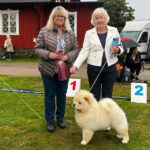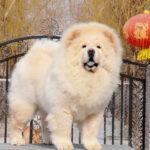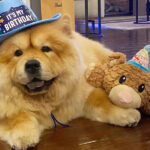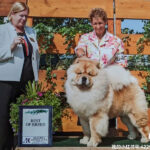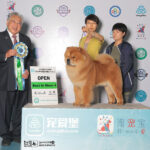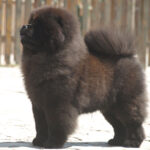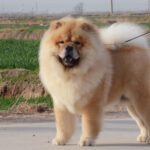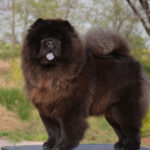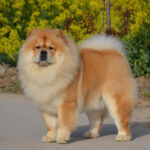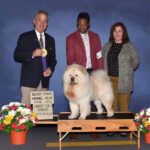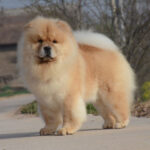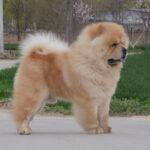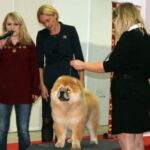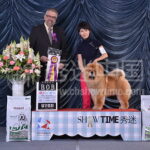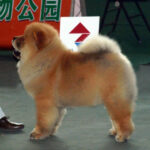
Chow Chows are known for their distinctive appearance,including their blue-black tongue,thick fur,and curly tail.They have a strong instinct to protect their family and territory,and may display aggressive behavior towards strangers or other animals if not socialized properly.Proper training and socialization are essential for ensuring that your Chow Chow is well-behaved and able to live happily and peacefully with other pets and people.
With the right training techniques,such as the recall method and hand signal method,you can teach your Chow Chow to follow your commands and behave appropriately in different situations.By establishing your leadership and socializing your Chow Chow from a young age,you can also prevent aggressive behavior and help your pet become a friendly and well-mannered companion.
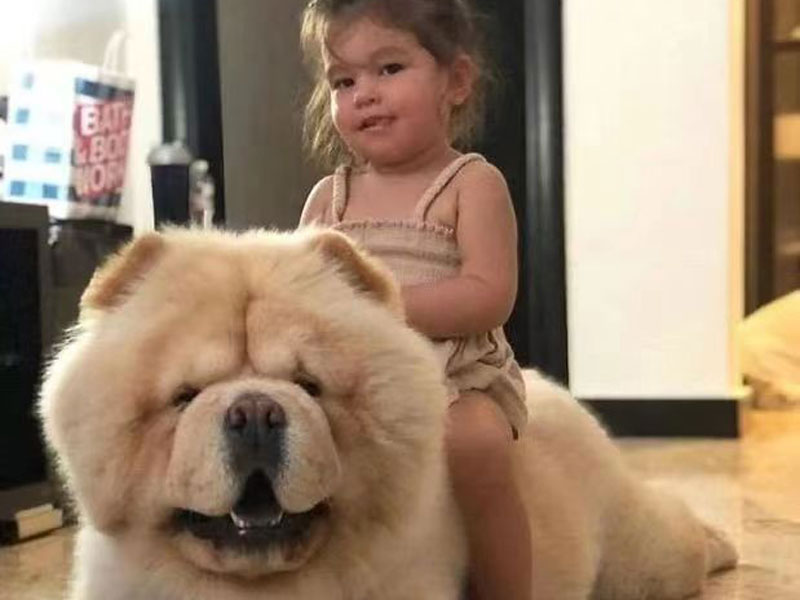
Chow Chows are known for their independent and stubborn nature,which can make them difficult to train.In many cases,owners may unintentionally encourage bad behavior without realizing it.For example,giving in to a Chow Chow’s demands for attention or food can reinforce negative behaviors like begging or jumping up on people.Inconsistent training or lack of boundaries can also lead to behavioral issues.It’s essential for Chow Chow owners to understand that certain behaviors can be inadvertently encouraged,and it’s crucial to be aware of these to prevent them from becoming habitual.
While traditional dog training methods can be effective,they often neglect certain crucial aspects of a dog’s behavior and psychology.One such aspect is the dog’s instinctual nature,which is especially true for breeds like the Chow Chow.Traditional training methods focus on teaching dogs commands and obedience without taking into consideration their natural instincts and tendencies.
As a result,dogs may exhibit negative behaviors,such as aggression or separation anxiety,which can become a serious problem for both the dog and its owner.Neglecting the dog’s instinctual nature can also hinder the training process and make it difficult to establish a positive relationship between the dog and its owner.Therefore,it is essential to consider a more comprehensive approach to training that acknowledges the dog’s natural instincts and behavioral patterns.
Early training is crucial for a Chow Chow’s development and behavior.The first few months of a Chow Chow’s life are the most critical,as it is during this time that they learn important socialization skills and basic obedience commands.Proper early training can help prevent behavioral issues from arising in the future,such as aggression or separation anxiety.Training during this period also helps establish trust and a strong bond between the Chow Chow and its owner.By starting training early,owners can help ensure that their Chow Chow grows up to be a well-behaved and obedient dog.
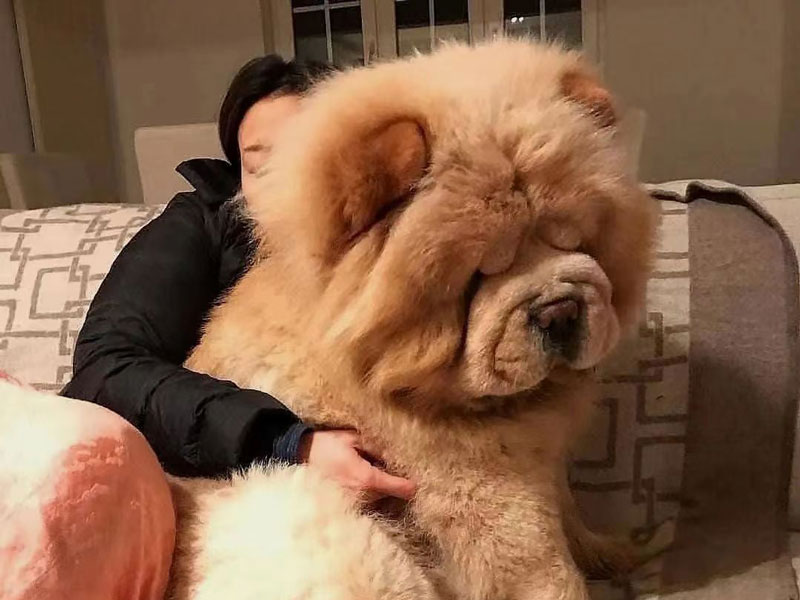
The recall method is a critical aspect of training any dog breed,including Chow Chows.The recall command,also known as the”come”command,is one of the most important skills your Chow Chow can learn.This command teaches your dog to come to you when you call them.This is essential for safety reasons,as you want to make sure your dog will come back to you if they ever wander off or get into an unsafe situation.
The recall method involves teaching your dog to associate the”come”command with positive rewards,such as treats or praise.This method takes patience and consistency,but once your Chow Chow has mastered the recall command,you can rest easy knowing that they will come back to you when called.
The Hand Signal Method is a popular way to train a Chow Chow.This method involves using a hand signal or gesture instead of a verbal command to communicate with your dog.Chow Chows respond well to visual cues and are known for their ability to read body language,making this method effective.To start,choose a simple hand gesture such as a hand signal to sit,and repeat it while giving your dog a treat.
Over time,your Chow Chow will associate the hand signal with the desired behavior and respond to it accordingly.This method is particularly useful when you are in a noisy environment or your dog is far away from you and cannot hear your voice.Remember to be consistent with your hand signals and reinforce positive behavior with treats and praise.
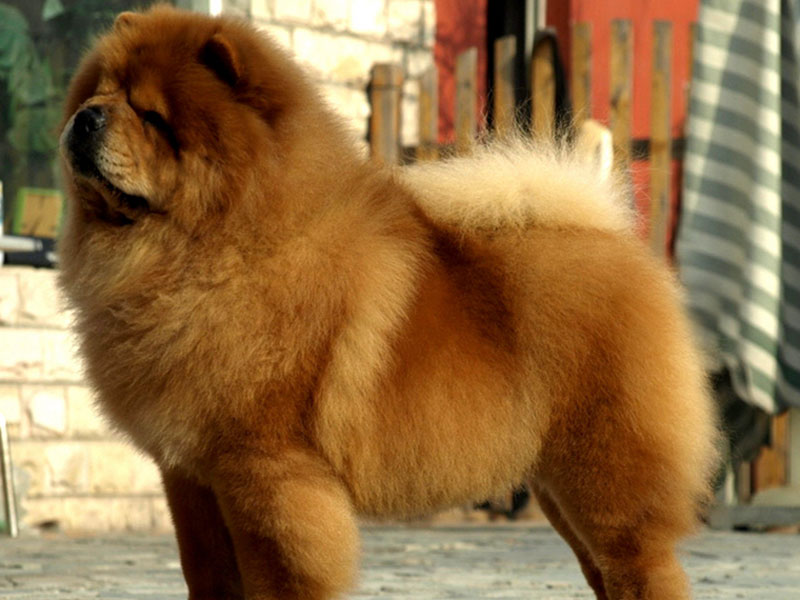
Basic training techniques are essential when it comes to effectively training a Chow Chow.One effective technique is positive reinforcement training,which involves rewarding desired behaviors with treats,praise,or playtime.By focusing on positive reinforcement,you can motivate and encourage your Chow Chow to repeat those behaviors in the future.
Another important aspect is consistency and repetition.Dogs,including Chow Chows,thrive on routine,so it’s important to be consistent in your training sessions and expectations.Repetition helps reinforce the desired behaviors and helps your Chow Chow understand what is expected of them.
Additionally,using commands and hand signals is crucial for effective communication.Teaching your Chow Chow specific commands,such as”sit”or”stay,”and pairing them with corresponding hand signals can enhance their understanding and response to your instructions.Remember to be patient,persistent,and always end each training session on a positive note.
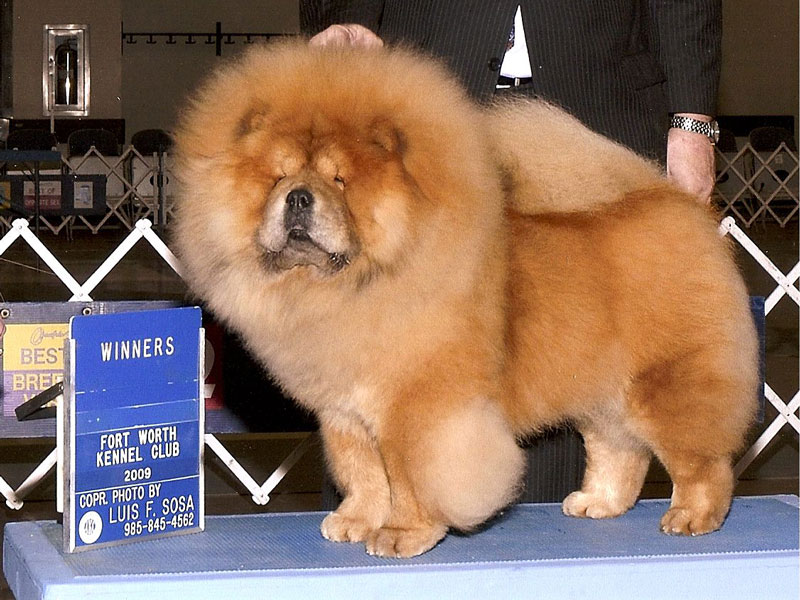
Socialization is a crucial aspect of training for Chow Chows and plays a significant role in their development and behavior.Proper socialization exposes them to different people,animals,environments,and experiences,helping them become well-rounded and confident dogs.It allows them to learn appropriate behaviors,manners,and communication skills,which are essential for them to interact positively with others.
Furthermore,exposing your Chow Chow to different environments is crucial for their adaptability and confidence.Taking them for walks in parks,busy streets,or other public spaces exposes them to various sights,sounds,and smells.This helps them become more resilient to new and potentially overwhelming environments,reducing the likelihood of anxiety or fear-related behaviors.
Remember to always prioritize your Chow Chow’s safety and well-being during these exposure sessions.Gradual and positive experiences,coupled with rewards and praise,can go a long way in shaping a well-socialized and adaptable Chow Chow who can confidently navigate the world around them.

One effective approach is desensitization and counterconditioning,which involves gradually exposing your Chow Chow to the feared stimulus in a controlled and positive manner.For example,if your Chow Chow is afraid of thunderstorms,you can play recordings of thunder at a low volume while engaging in fun activities or providing treats to create positive associations.Over time,you can gradually increase the volume to help your Chow Chow become more comfortable and less anxious around thunderstorms.
It’s also important to provide a safe and secure environment for your Chow Chow,where they can retreat and feel protected when they feel anxious or fearful.This can be a designated”safe space”in your home or a cozy crate where they can seek refuge during stressful situations.
If your Chow Chow’s fears or anxieties persist or worsen,it’s recommended to seek guidance from a professional dog trainer or animal behaviorist.They can provide specialized techniques and support tailored to your Chow Chow’s specific needs,helping them overcome their fears and anxieties in a positive and effective way.
Remember,addressing fears and anxieties in your Chow Chow requires patience,understanding,and consistent training.With your love and support,you can help your furry companion feel more confident,secure,and at ease in their surroundings.

The best time to begin training your chow chow is as early as possible.Puppies are like sponges and are constantly learning from their environment.It is important to start training them as soon as they arrive in their new home.Basic obedience training such as potty training,crate training,and socialization can be started as early as 8 weeks old.By starting early,you can establish good habits and prevent any bad behaviors from developing.Waiting too long to start training can make it more difficult to change established behaviors,so it is best to start as soon as possible.However,it is never too late to begin training and you can see progress with older dogs as well.
Ideally,you want to select a quiet and distraction-free area where you can focus on your training sessions without interruptions.A spacious backyard or a quiet indoor space can work well for training purposes.It’s important to ensure that the location is safe and secure,free from hazards that could potentially harm your dog.Additionally,the chosen location should have good lighting and ventilation.Having a designated training area helps your chow chow understand that it’s a time for focused learning and allows you to establish consistency in your training routine.Remember to remove any potential distractions or temptations from the training area to keep your chow chow’s attention solely on the training exercises.

Defining tasks for your chow chow is a crucial step in their training journey.Task definition involves breaking down desired behaviors into smaller,manageable steps that your chow chow can easily understand and execute.
Start by identifying the specific tasks or commands you want to teach your dog,such as sit,stay,or fetch.Then,break down each task into smaller components and teach them one at a time.For example,if you want to teach your chow chow to sit,you can break it down into the steps of luring them into a sitting position,adding a verbal cue like”sit,”and rewarding them for successfully sitting.By defining tasks in this manner,you make the training process more clear and achievable for your chow chow.
It’s important to be patient and consistent during task training,rewarding your dog for each successful completion and gradually increasing the difficulty level as they progress.With clear task definition and consistent training,your chow chow will develop a better understanding of what is expected of them and become a well-trained and obedient companion.

